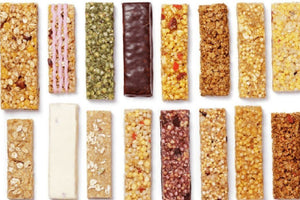
If you have been diagnosed with Type 1 Diabetes, you may well have a lot of questions. If you're active, one of those questions might be 'can I run?' Read our article to learn how to get started, how to fuel for races, and answer many other questions you may have about running with type 1 diabetes.
Making a start
One of the most important things to consider when running with diabetes is taking glucose tablets with you. If you start to get low blood sugar during a run, these tablets can be literal lifesavers. It's also paramount that you check your blood sugar before a run.
If you're just starting out, it's important to take it slow and steady and see how your body reacts at first. Depending on how recent your diagnosis and control of diabetes has been, this first phase of learning how your blood sugar drops while running can be extremely frustrating. It is more important to get your resting blood sugar stable than to get back into running quickly.
An easy way to get your head around it is thinking of it as an injury. You need to have control of your resting blood sugar because if you don't, you won't know how much it is dropping during exercise and therefore cannot compensate for that drop.
Heading out for your first run
When you're ready to go for your first run, take it easy and listen to your body. Try a couple of miles at an easy pace to start you off.
Check your blood sugar pre-run and make a note of it. For a run this short, it is recommend you eat a banana (or something else with roughly 12g carbs) around 5-10 minutes before your run.
When you get back from your run, do whatever it is you normally do post-run and then check your blood sugar again. This will give you an idea of how your body reacts. Keep in mind that this one run will not tell you how your body will react every time.
It's important to note that your body will not always drop blood sugar by the same amount for the same effort/time run.

Preparing for longer runs
Thankfully, it's nice and straight forward to calculate how many carbs you'll need before a long run if you know how many you need before a shorter one. If you eat 12g of carbs before running 3 miles and that works for you, a 6 mile run will be roughly double that.
The tricky part is how to take on the carbs. If you’re running 10 miles, it’s not a good idea to eat 36g of carbs before a run. Your blood sugar will spike drastically and will take a while to come back down as you run. It’s much better to split up the carbs throughout the run by taking on gels and other easy-to-absorb energy sources.
It's recommended not to eat more than 24g of carbs at one time before or during a run. Thankfully, most gels are in the 20-30g range so they are perfect. It's also highly recommended to take food on longer runs of over 6 miles/10k.
It's also important to note than some runners will proudly say they don't need extra food or energy during runs. Some even claim not to take on energy for runs under half marathon distance. Remember that that's what works for them, but unfortunately won't work for you. Forget about what other people are doing and make sure you focus on works for you. If that means taking on fuel during a shorter training run, so be it.
How to fuel for races
Fuelling for your races should be no different to fuelling for your training runs. Make sure you have found what works for you in training so that there are no nasty surprises on race day!
If you do get an upset stomach on race day, there's a chance it is simply a combination of nerves and having to eat at a different time to what you're used to due to the start time of the race. Eating right before a race may well give you stomach problems, but sometimes this is your only choice if it has a very early start time. Again, find what works for you and don't be afraid to go for the trial and error approach.
Coping with low blood sugar while running
You should already be accustomed to the signs of low blood sugar and these are no different when running. However, they may be harder to spot so take extra care. One of the most common will be feeling persistently lightheaded.
When you get low blood sugar, and it is bound to happen at some point, eat the extra food you have or take multiple glucose tablets. If the food you eat to get over your low blood sugar is all that you have with you, it's time to cut the run short and head home. While it’s not always necessary to stop running after getting low blood sugar, it’s much safer to be close to home after you’ve had an episode.

















